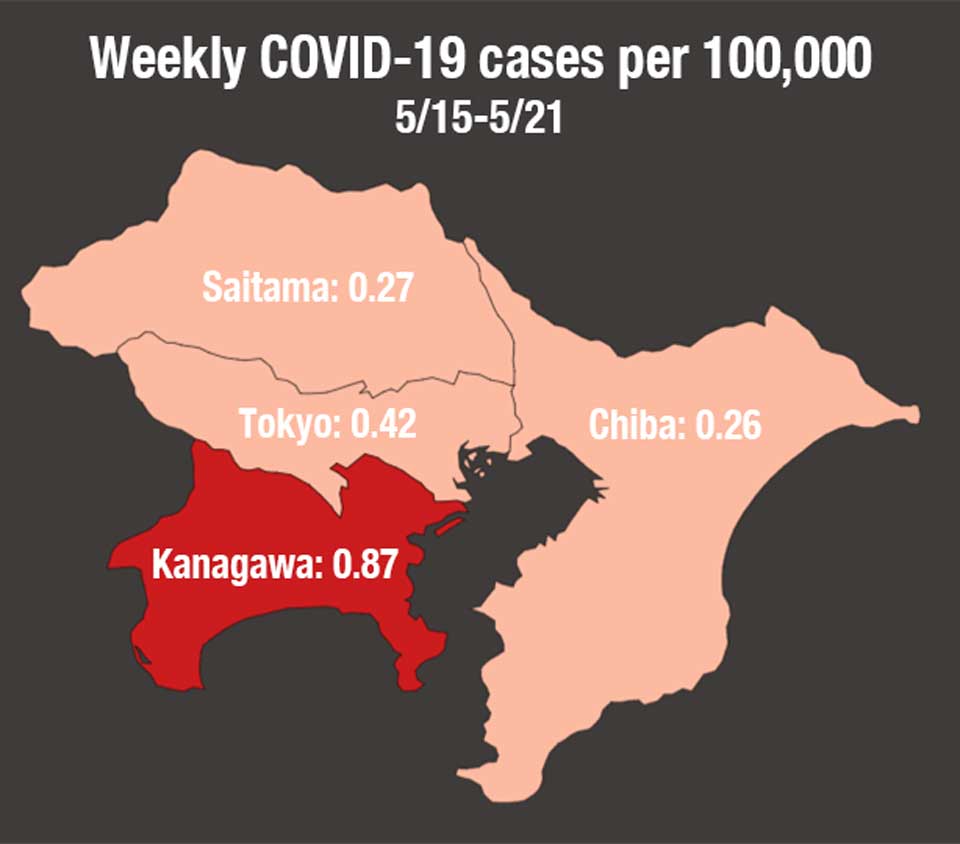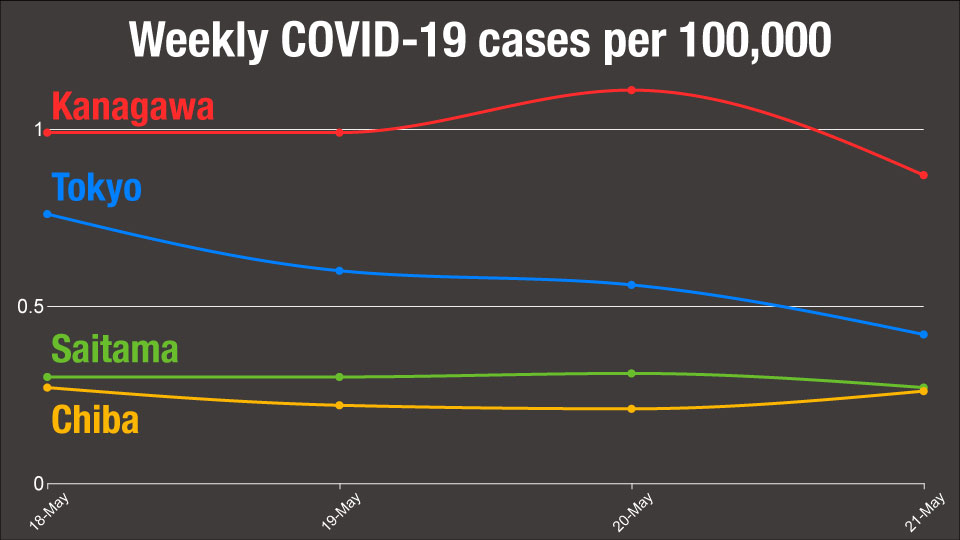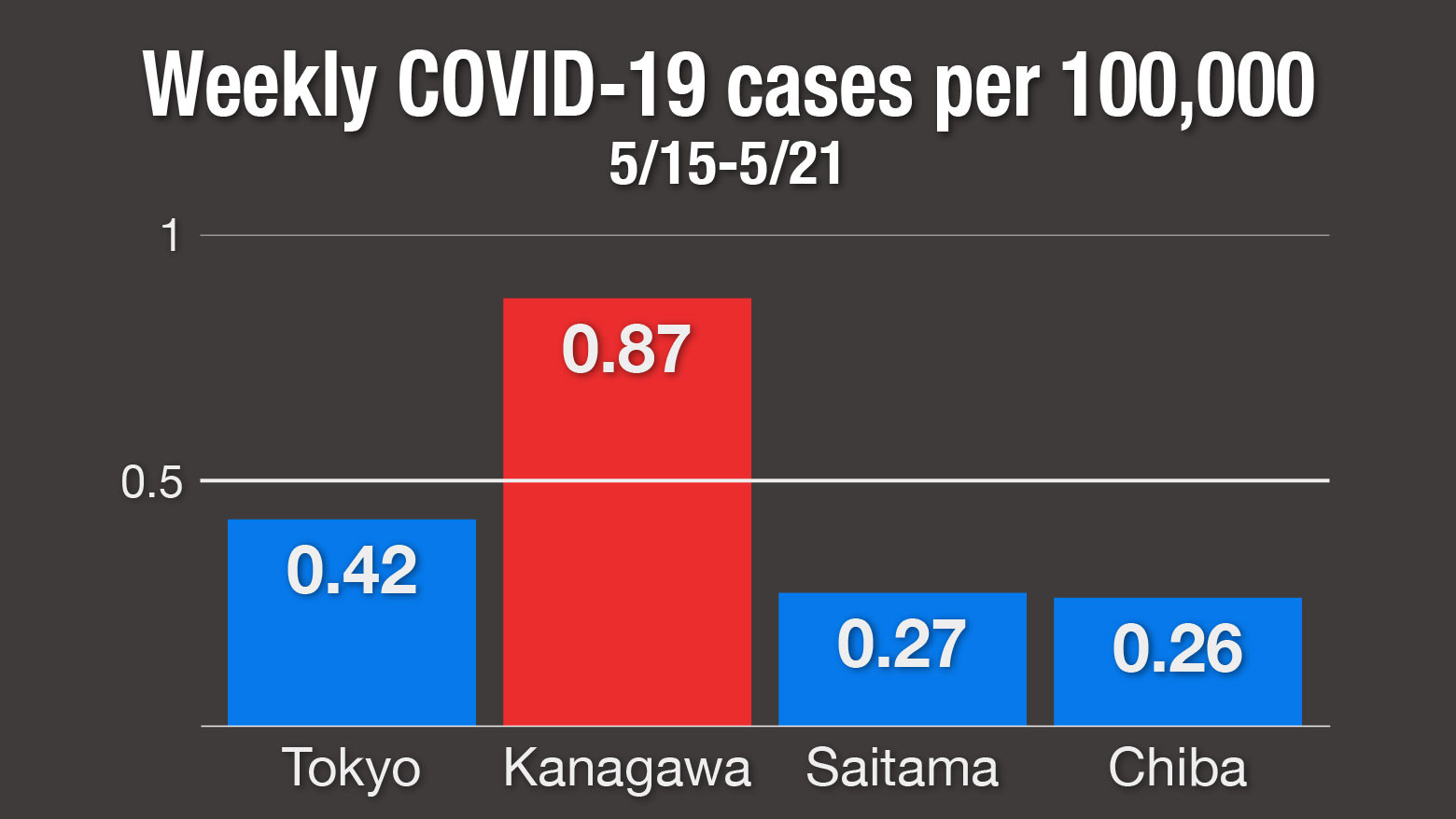Tokyo, Saitama and Chiba all hit one of the key criteria for lifting the state of emergency. Their new infections in the preceding week were all less than 0.5 per 100,000 people. But Kanagawa failed to hit that target. The rate there was 0.87.
The government has suggested it wants to treat the four regions as a single area.

Kanagawa prefectural officials say the higher infection rate there is largely because of clusters at medical institutions.
They say 48 out of the 102 cases reported in the seven days through Wednesday were linked to hospitals, including 12 at a hospital in Yokohama City that has been linked to 78 infections overall.
Kitabo Eiko, head nurse at a hospital in the prefecture that has treated 28 coronavirus patients, says she is relieved that the state of emergency remains in effect.
Her staff are stretched to their limits.
"I can't be optimistic just because the number of infections is decreasing. I think it could rise if the state of emergency is lifted," she says.

Prime Minister Abe Shinzo has said that as the number of new cases declines in the Tokyo area, and medical institutions become less crowded, he will revisit the statistics with experts as early as Monday.
The government lifted the state of emergency for 39 other prefectures last week, but officials are urging residents to continue to be cautious in order to prevent a second wave of infections.
In total, more than 16,500 people had tested positive for the coronavirus in Japan as of Thursday. About 790 have died.

